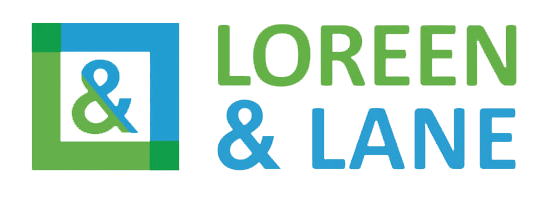In the complex landscape of healthcare, Medicare Part D stands out as a critical component, offering vital prescription drug coverage to millions of Americans. Understanding its nuances is crucial for ensuring you make the most of this benefit. Let’s dive into what Medicare Part D is, how it works, eligibility requirements, enrollment periods, cost considerations, and key factors to consider when choosing a plan.
What is Medicare Part D?
Medicare Part D is a federal program that helps Medicare beneficiaries afford prescription drugs. It’s a voluntary program available to people with Medicare, offering coverage for both brand-name and generic prescription drugs. This program is provided through private insurance companies approved by Medicare.
How Does Medicare Part D Work?
Medicare Part D works alongside Original Medicare (Part A and Part B) or Medicare Advantage (Part C) plans. Beneficiaries can choose a standalone Part D plan to add to their Original Medicare coverage, or they can opt for a Medicare Advantage plan that includes prescription drug coverage.
Part D plans vary in terms of the list of covered drugs (formulary), monthly premiums, annual deductibles, and copayments or coinsurance. Beneficiaries can compare plans based on their specific medication needs and choose the one that offers the best coverage at the lowest cost.
Eligibility for Medicare Part D
Eligibility for Medicare Part D is the same as for Medicare in general. You must be 65 or older, or have a qualifying disability, to be eligible for Medicare benefits, including Part D. You also need to be enrolled in either Medicare Part A or Part B.
Enrollment Periods
There are specific enrollment periods for Medicare Part D:
- Initial Enrollment Period (IEP): The IEP is the seven-month period that starts three months before the month you turn 65, includes your birthday month, and ends three months after your birthday month.
- Annual Enrollment Period (AEP): The AEP runs from October 15 to December 7 each year. During this time, you can enroll in a new Part D plan or switch to a different one.
- Special Enrollment Period (SEP): You may qualify for an SEP if you experience certain life events, such as moving to a new area with different Part D plan options, losing other drug coverage, or becoming eligible for Extra Help.
Cost Considerations
The cost of Medicare Part D includes monthly premiums, annual deductibles, and copayments or coinsurance. Premiums vary depending on the plan you choose, but most people pay a standard premium set by Medicare.
In 2024, the average monthly premium for a Part D plan is around $33, but costs can vary widely based on factors such as the plan’s coverage and your location. Some Part D plans have no deductible, while others may have deductibles up to the maximum allowed by Medicare ($480 in 2022).
Key Factors to Consider When Choosing a Part D Plan
When choosing a Medicare Part D plan, consider the following factors:
- Coverage for Your Medications: Ensure the plan covers the medications you currently take or may need in the future.
- Costs: Compare premiums, deductibles, and copayments or coinsurance to find a plan that fits your budget.
- Pharmacy Network: Check if your preferred pharmacies are in the plan’s network to avoid higher costs.
- Star Ratings: Consider a plan’s Star Ratings, which indicate its quality and performance.
- Coverage Gap (Donut Hole): Be aware of the coverage gap, where you may pay more for your medications until you reach catastrophic coverage.

Conclusion
Medicare Part D plays a crucial role in providing affordable access to prescription drugs for Medicare beneficiaries. Understanding how Part D works, its costs, enrollment periods, and key factors to consider when choosing a plan can help you make informed decisions about your healthcare coverage.
Navigating the complexities of Medicare Part D can be daunting, but you don’t have to do it alone. Retirement Answer Team is here to help you find a plan that suits your needs. Our experienced agents are available to answer any questions you may have and guide you through the process. Contact us today to ensure you have the prescription drug coverage you need for a healthy future.
FAQs
Q1: Can I switch Part D plans if my medication needs change?
A1: Yes, you can switch Part D plans during the Annual Enrollment Period (October 15 to December 7) if your medication needs change or if you find a plan that better meets your needs.
Q2: Will I have to pay a penalty if I don’t enroll in a Part D plan when I’m first eligible?
A2: Yes, you may have to pay a late enrollment penalty if you go without Part D or creditable prescription drug coverage for any continuous period of 63 days or more after your Initial Enrollment Period.
Q3: What is the Extra Help program, and how can it help me with Part D costs?
A3: The Extra Help program, also known as the Low-Income Subsidy (LIS), helps people with limited income and resources pay for prescription drug costs associated with Medicare Part D. It can help cover premiums, deductibles, and copayments.
Q4: Can I get assistance in choosing a Part D plan?
A4: Yes, you can get assistance from Medicare itself by calling 1-800-MEDICARE or by using the Medicare Plan Finder tool on the Medicare website. You can also seek help from State Health Insurance Assistance Programs (SHIPs) or a licensed insurance agent.
Q5: Are all prescription drugs covered under Part D?
A5: Not all prescription drugs are covered under Part D. Each Part D plan has its own formulary, or list of covered drugs, which may include both brand-name and generic drugs. It’s important to review a plan’s formulary to ensure your medications are covered.

